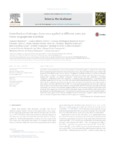Use este identificador para citar ou linkar para este item:
http://www.alice.cnptia.embrapa.br/alice/handle/doc/1060601Registro completo de metadados
| Campo DC | Valor | Idioma |
|---|---|---|
| dc.contributor.author | BRUNETTO, G. | pt_BR |
| dc.contributor.author | CERETTA, C. A. | pt_BR |
| dc.contributor.author | MELO, G. W. B. de | pt_BR |
| dc.contributor.author | GIROTTO, E. | pt_BR |
| dc.contributor.author | FERREIRA, P. A. A. | pt_BR |
| dc.contributor.author | LOURENZI, C. R. | pt_BR |
| dc.contributor.author | COUTO, R. da R. | pt_BR |
| dc.contributor.author | TASSINARIA, A. | pt_BR |
| dc.contributor.author | HAMMERSCHMITT, R. K. | pt_BR |
| dc.contributor.author | SILVA, L. O. S. da | pt_BR |
| dc.contributor.author | LAZZARETTI, B. P. | pt_BR |
| dc.contributor.author | KULMANN, M. S. de S. | pt_BR |
| dc.contributor.author | CARRANCA, C. | pt_BR |
| dc.date.accessioned | 2017-01-12T11:11:11Z | pt_BR |
| dc.date.available | 2017-01-12T11:11:11Z | pt_BR |
| dc.date.created | 2017-01-12 | pt_BR |
| dc.date.issued | 2016 | pt_BR |
| dc.identifier.citation | Scientia Horticulturae, v. 207, p. 1?6, 2016. | pt_BR |
| dc.identifier.uri | http://www.alice.cnptia.embrapa.br/alice/handle/doc/1060601 | pt_BR |
| dc.description | In Brazilian vineyards planted in sandy soils, nitrogen (N) should be applied at optimal rates and timing that correspond to greatest demand, thus minimizing N losses. The aim of this study was to evaluate the grapevine N distribution and recovery of urea-15N applied at budding and bloom. In 2009, in a vineyard (Vitis vinifera cv. Cabernet Sauvignon) planted in Santana do Livramento, south Brazil, grapevines were treated with 10 kg N ha?1 at budding +10 kg N ha?1 at full bloom (10B + 10F); 20 kg N ha?1 at budding +20 kg N ha?1 atfull bloom (20B + 20F); 20 kg N ha?1 at budding (20B); and 40 kg N ha?1 atfull bloom (40F). Budding of grapevines in 2009 and 2010 was atthe end of August and full bloom in November. In February 2010 and 2011, grapevine organs (leaves, berries, stem and roots) were collected, and in February 2011 soil samples were also collected in the profile. The wine-producing grapevines grown in the sandy soil took up more N derived from 20B treatment, compared with other N treatments, especially in the first crop season. The N derived from fertilizer applied at different rates and time was preferentially distributed in annual plant organs, but most N contained in the plant organs was derived from other sources than the fertilizer N. In the following season, 15N applied in the previous year was recovered preferentially in leaves and fruits, again in low amounts. Nitrogen derived from fertilizer applied at different rates and time in a sandy soil apparently contributes little to grapevine nutrition | eng |
| dc.language.iso | eng | pt_BR |
| dc.rights | openAccess | eng |
| dc.subject | Uptake | pt_BR |
| dc.subject | Derived from fertilizer | pt_BR |
| dc.subject | Plant N | pt_BR |
| dc.subject | Residual soil N | pt_BR |
| dc.subject | Solos vitícolas | pt_BR |
| dc.subject | Processo de rizosfera | pt_BR |
| dc.subject | Práticas agronômicas | pt_BR |
| dc.title | Contribution of nitrogen from urea applied at different rates andtimes on grapevine nutrition. | pt_BR |
| dc.type | Artigo de periódico | pt_BR |
| dc.date.updated | 2019-05-06T11:11:11Z | pt_BR |
| dc.subject.thesagro | Cobre | pt_BR |
| dc.subject.thesagro | Solo | pt_BR |
| dc.subject.thesagro | Vitis Vinifera | pt_BR |
| riaa.ainfo.id | 1060601 | pt_BR |
| riaa.ainfo.lastupdate | 2019-05-06 -03:00:00 | pt_BR |
| dc.contributor.institution | GUSTAVO BRUNETTO, Department of Soil Science of the Federal University of Santa Maria, C.P. 221, CEP 97105-900 Santa Maria, RS, Brazil; Carlos Alberto Ceretta, Department of Soil Science of the Federal University of Santa Maria, C.P. 221, CEP 97105-900 Santa Maria, RS, Brazil; GEORGE WELLINGTON BASTOS DE MELO, CNPUV; Eduardo Girotto, federal Institute of Education, Science and Technology of the Rio Grande do Sul, Rua Nelsi Ribas Fritsch 1111, Ibirubá, CEP 98200-000 RS, Brazil; Paulo Ademar Avelar Ferreira, Department of Soil Science of the Federal University of Santa Maria, C.P. 221, CEP 97105-900 Santa Maria, RS, Brazil; Cledimar Rogério Lourenzi, Department of Rural Engineering of the Federal University of Santa Catarina, Rodovia Admar Gonzaga 1346, Florianópolis, CEP 88034-000 SC, Brazil; Rafael da Rosa Couto, Department of Soil Science of the Federal University of Santa Maria, C.P. 221, CEP 97105-900 Santa Maria, RS, Brazil; Adriele Tassinaria, Department of Soil Science of the Federal University of Santa Maria, C.P. 221, CEP 97105-900 Santa Maria, RS, Brazil; Rodrigo Knevitz Hammerschmitt, Department of Soil Science of the Federal University of Santa Maria, C.P. 221, CEP 97105-900 Santa Maria, RS, Brazil; Lincon Oliveria Stefanello da Silva, Federal Institute of Education, Science and Technology of the Rio Grande do Sul, Rua Nelsi Ribas Fritsch 1111, Ibirubá, CEP 98200-000 RS, Brazil; Bruno Pedro Lazzaretti, Department of Soil Science of the Federal University of Santa Maria, C.P. 221, CEP 97105-900 Santa Maria, RS, Brazil; Matheus Severo de Souza Kulmann, Department of Soil Science of the Federal University of Santa Maria, C.P. 221, CEP 97105-900 Santa Maria, RS, Brazil; Corina Carranca, Instituto Nacional de Investigac¸ ão Agrária e Veterinária, Quinta do Marquês, Av. República, Nova Oeiras, Portugal. | pt_BR |
| Aparece nas coleções: | Artigo em periódico indexado (CNPUV)  | |
Arquivos associados a este item:
| Arquivo | Descrição | Tamanho | Formato | |
|---|---|---|---|---|
| Contributionofnitrogenfromureaappliedatdifferentratesandtimes.pdf | 344,58 kB | Adobe PDF |  Visualizar/Abrir |









